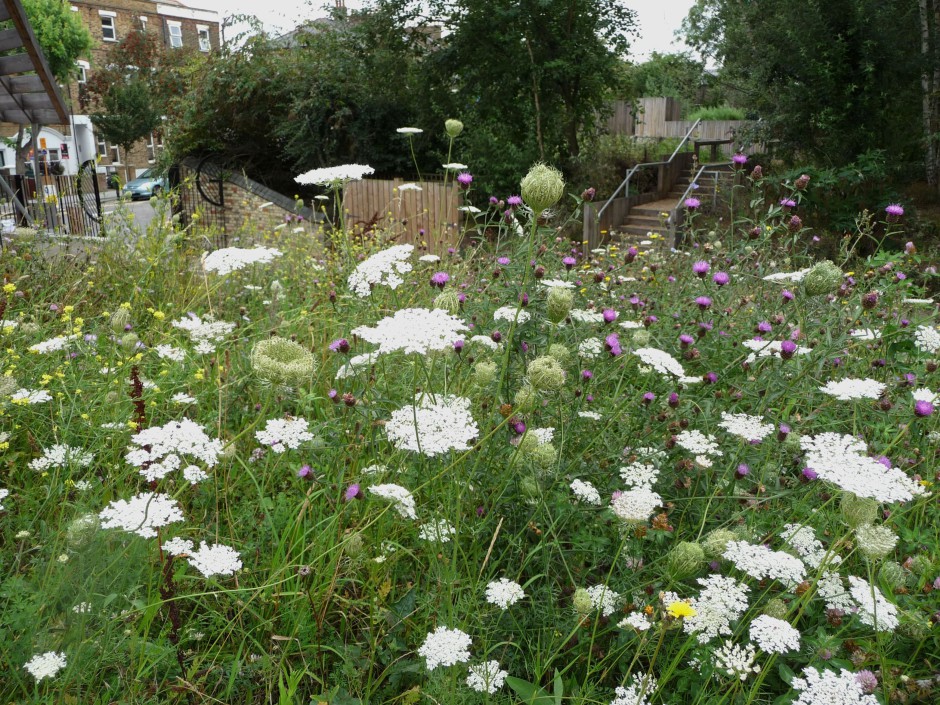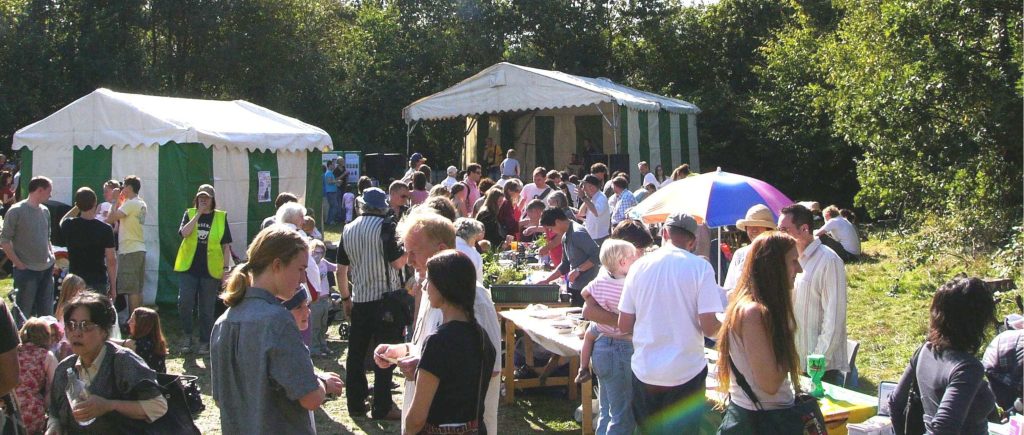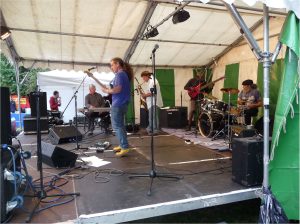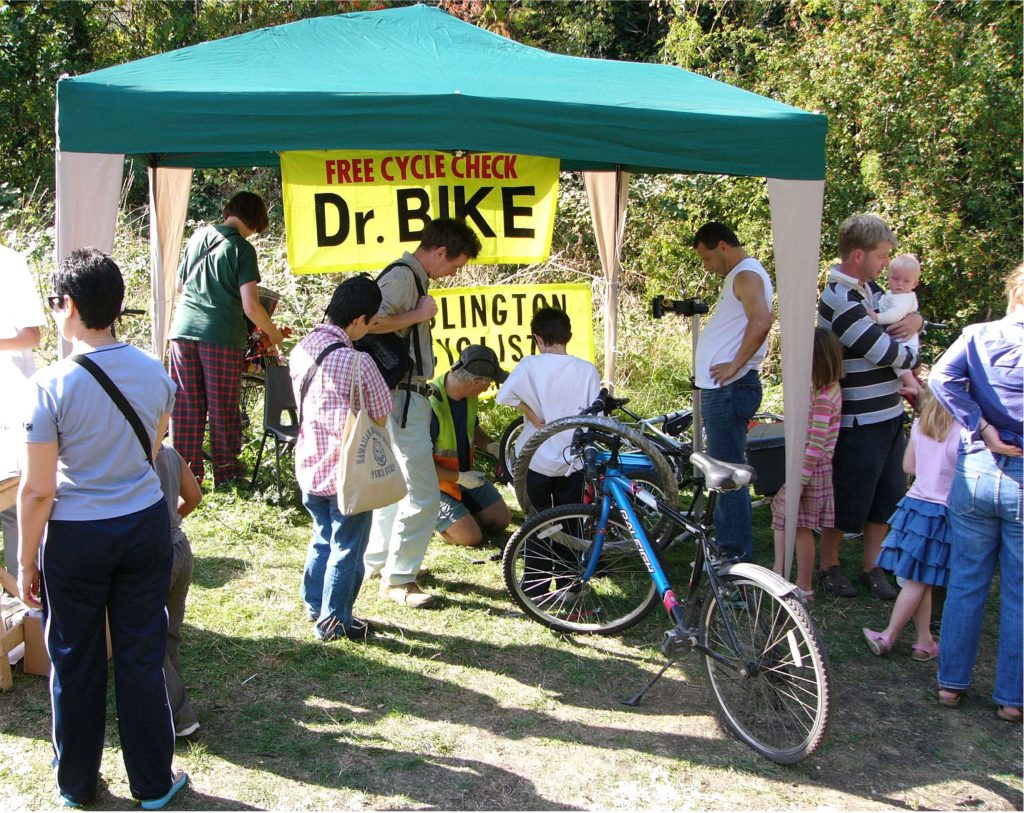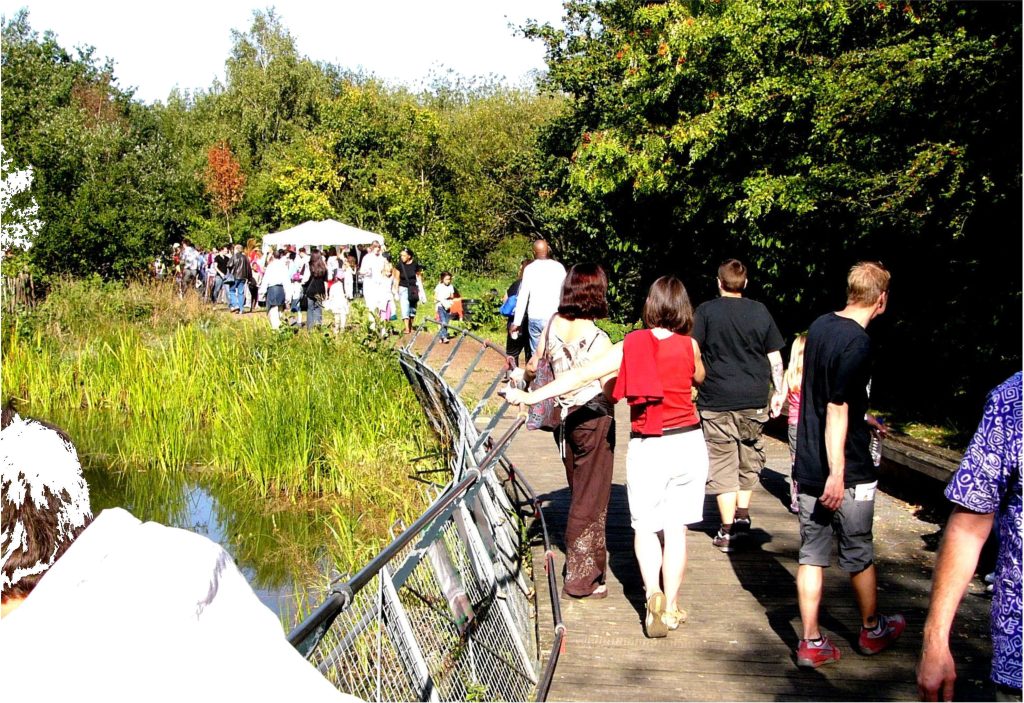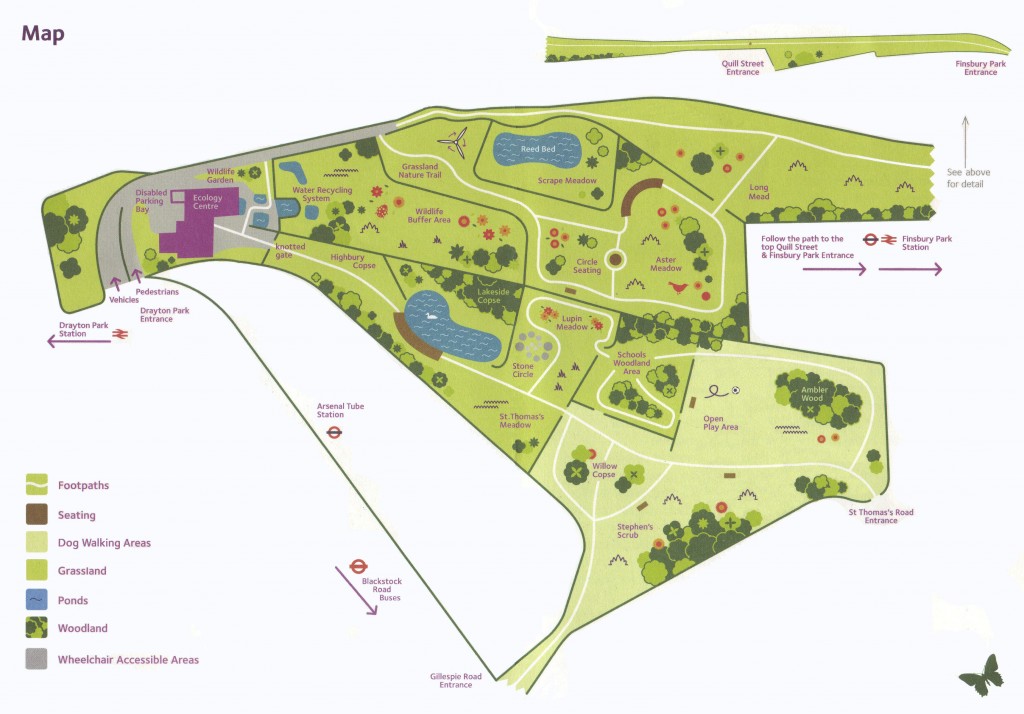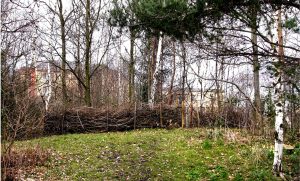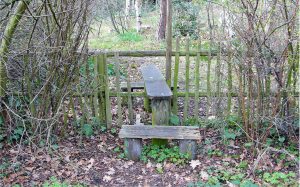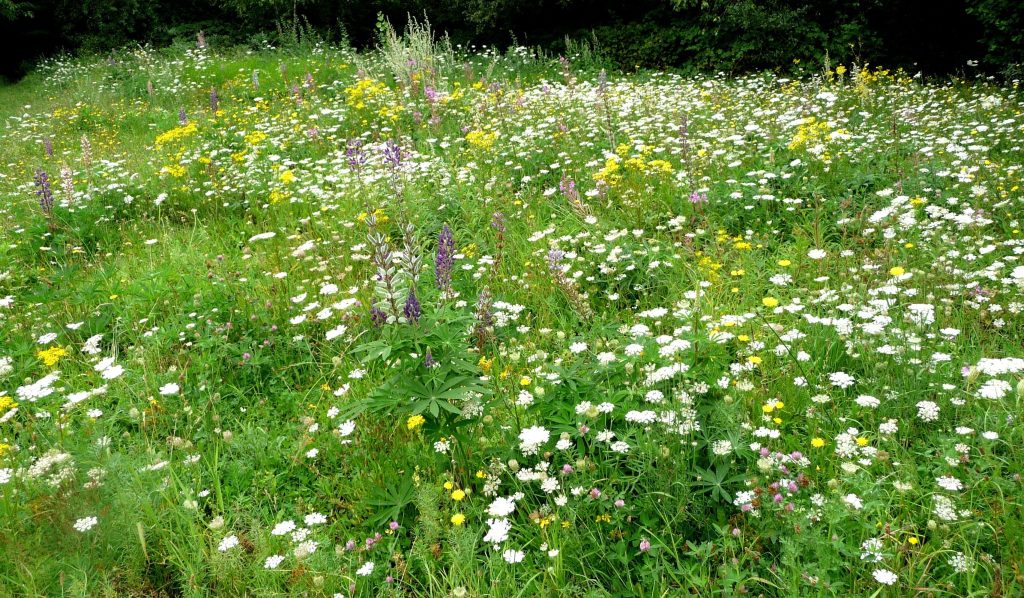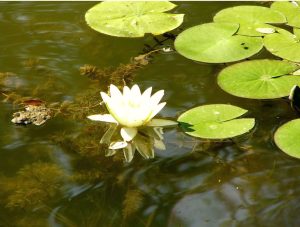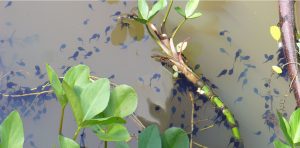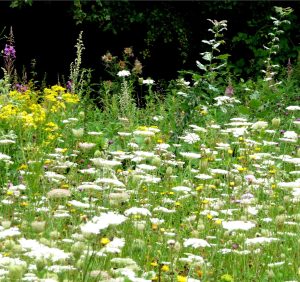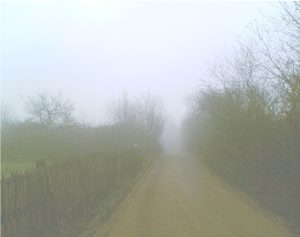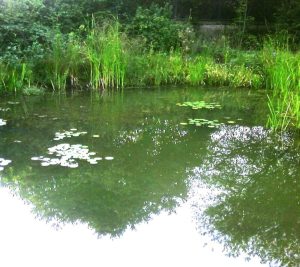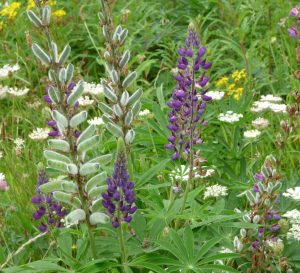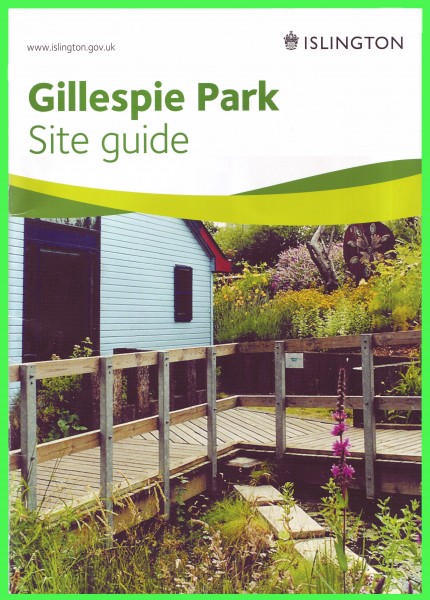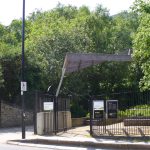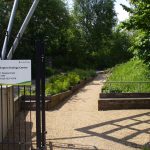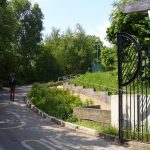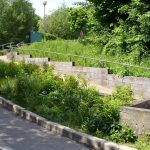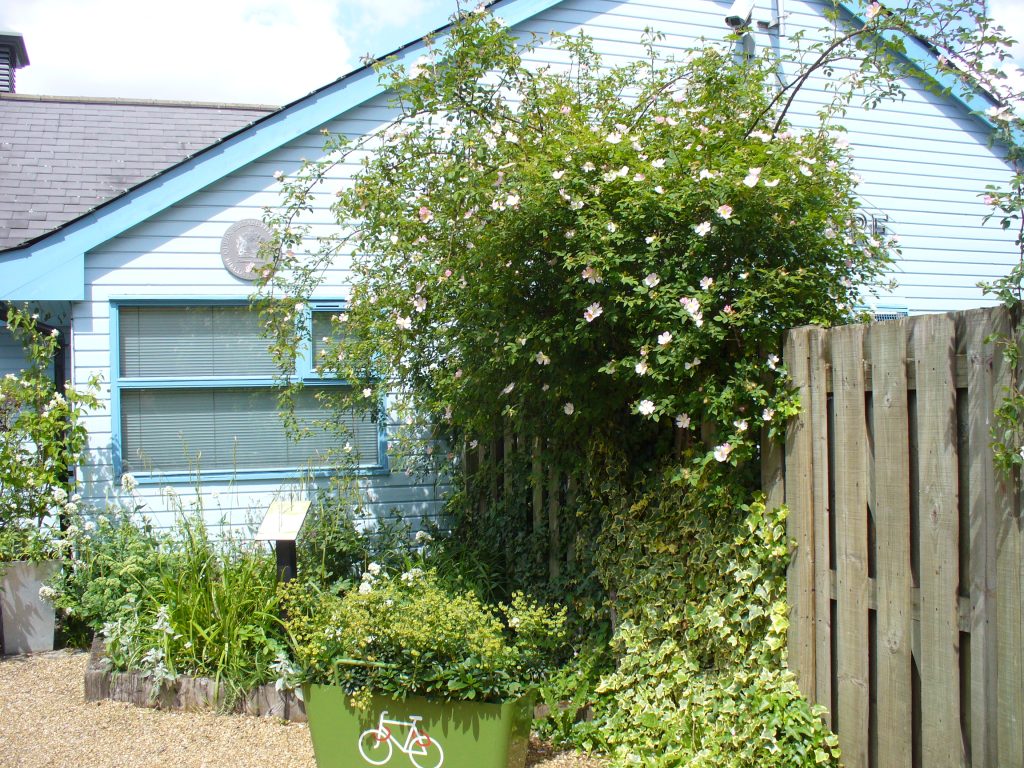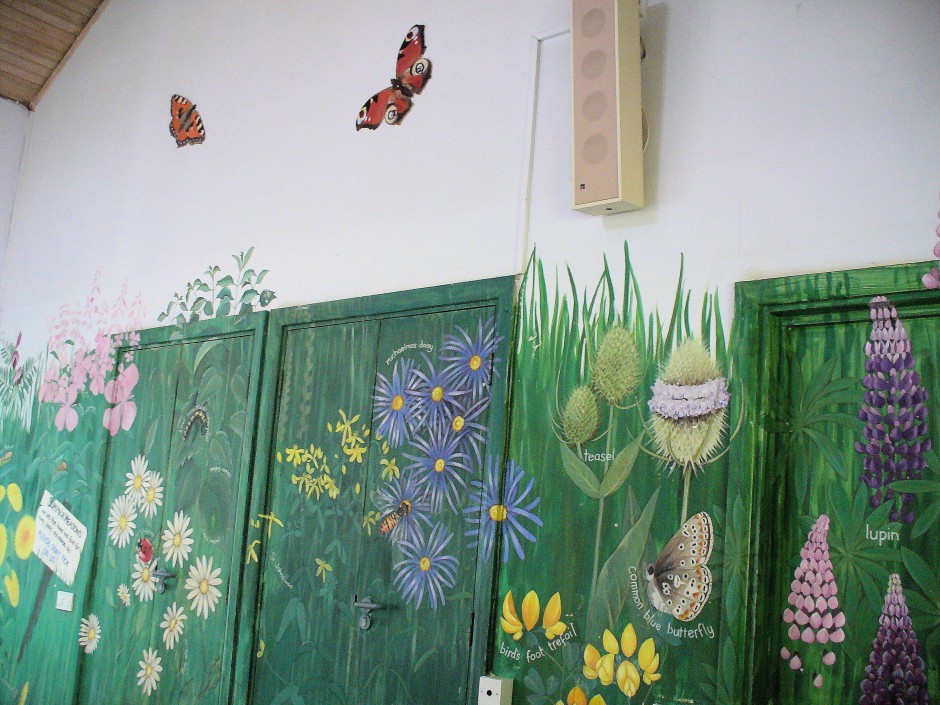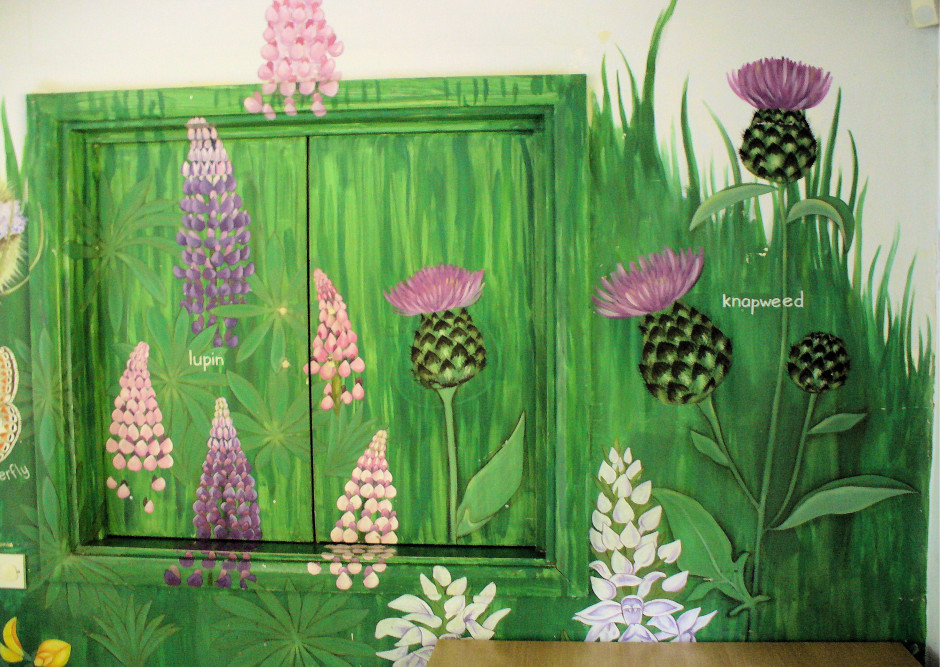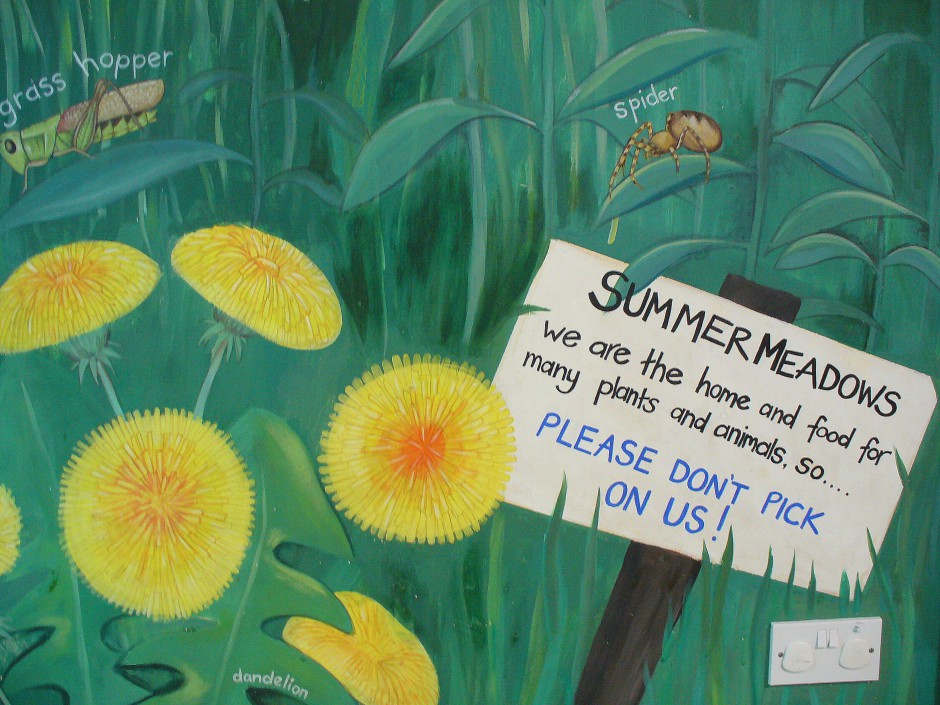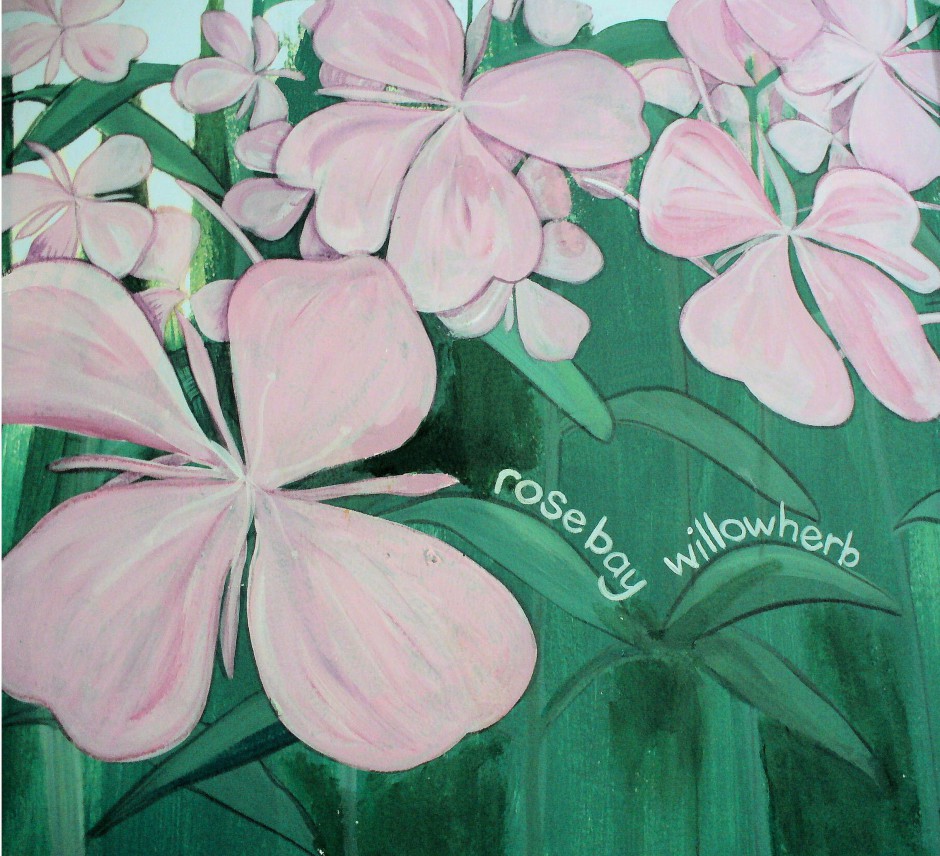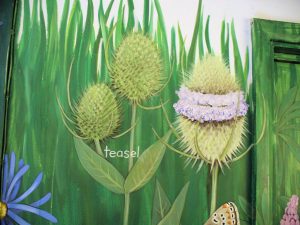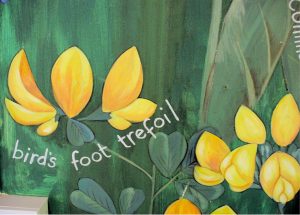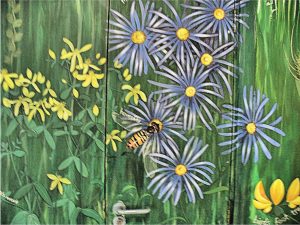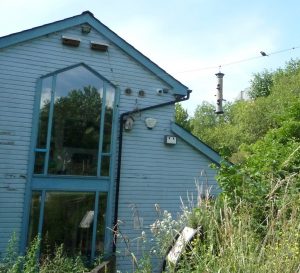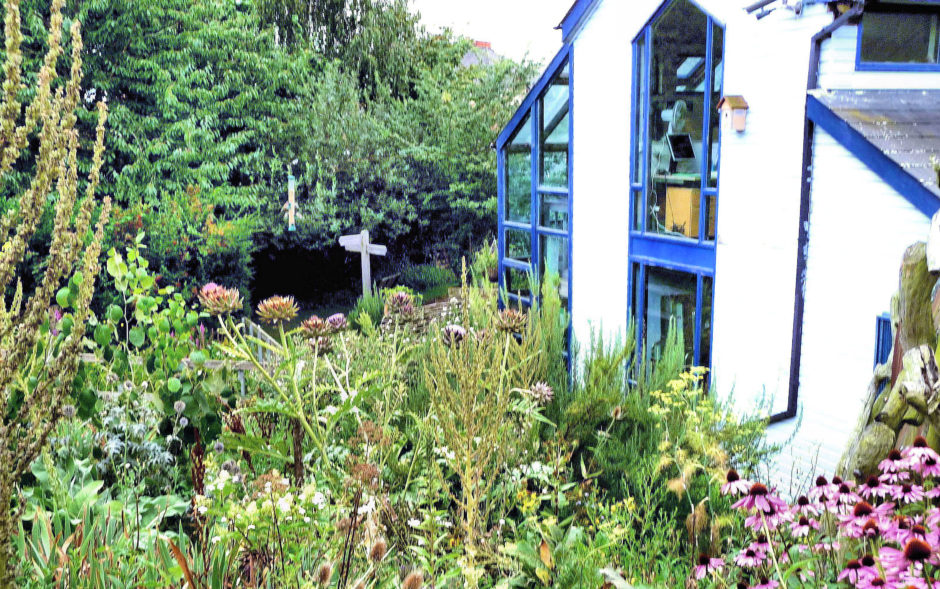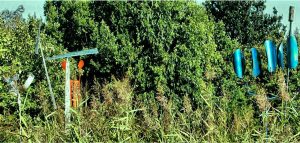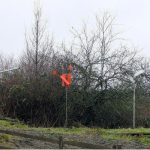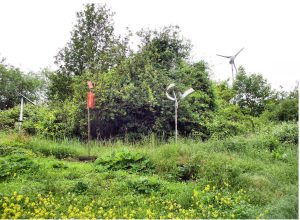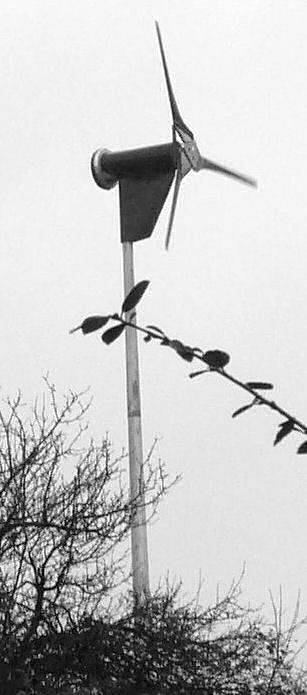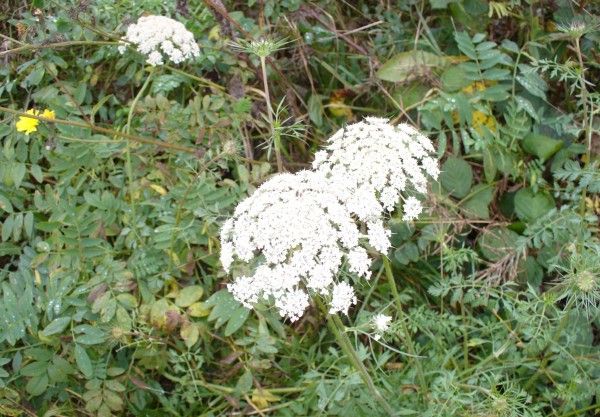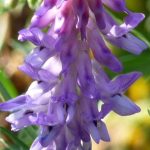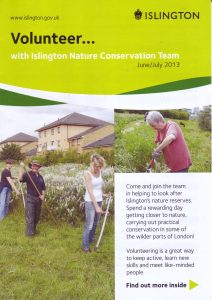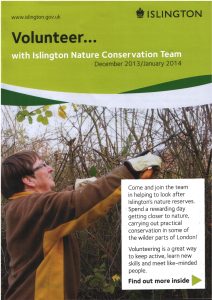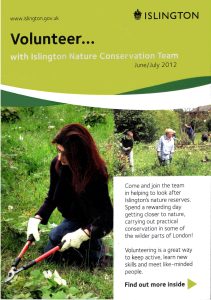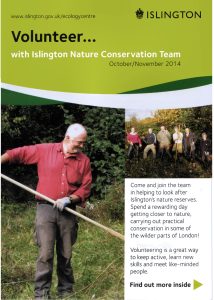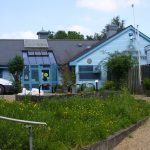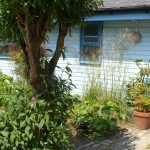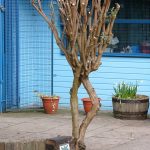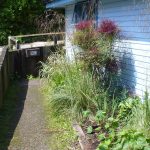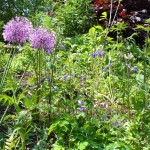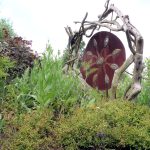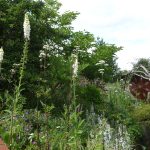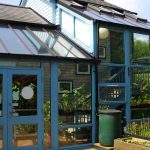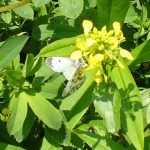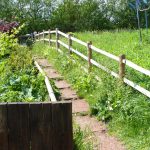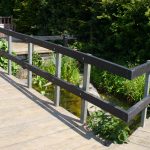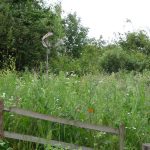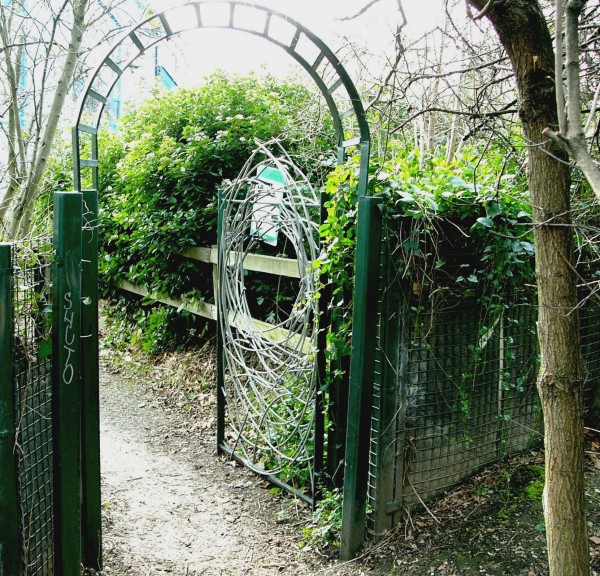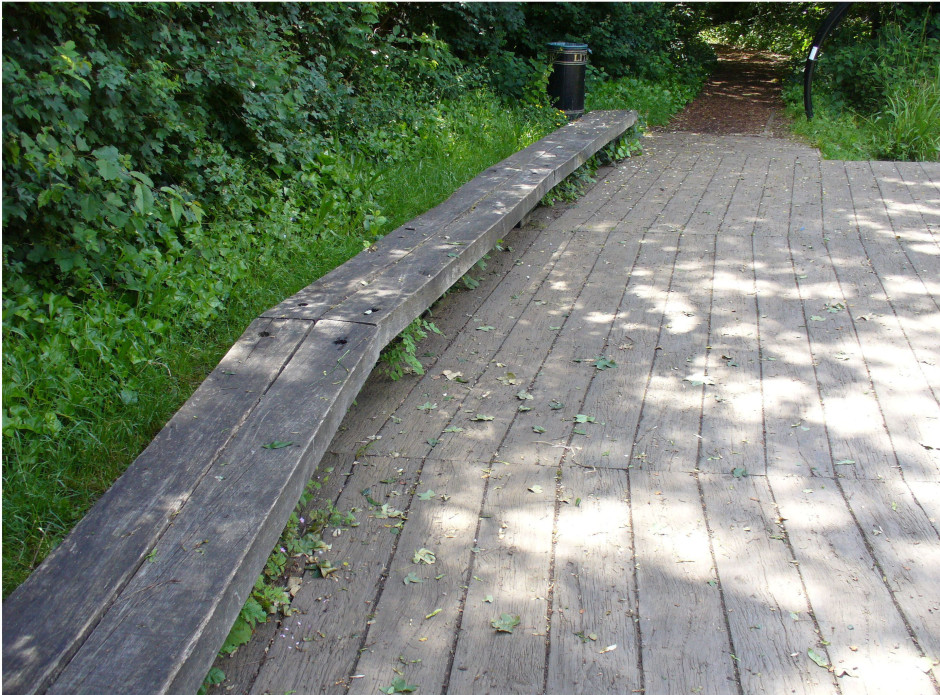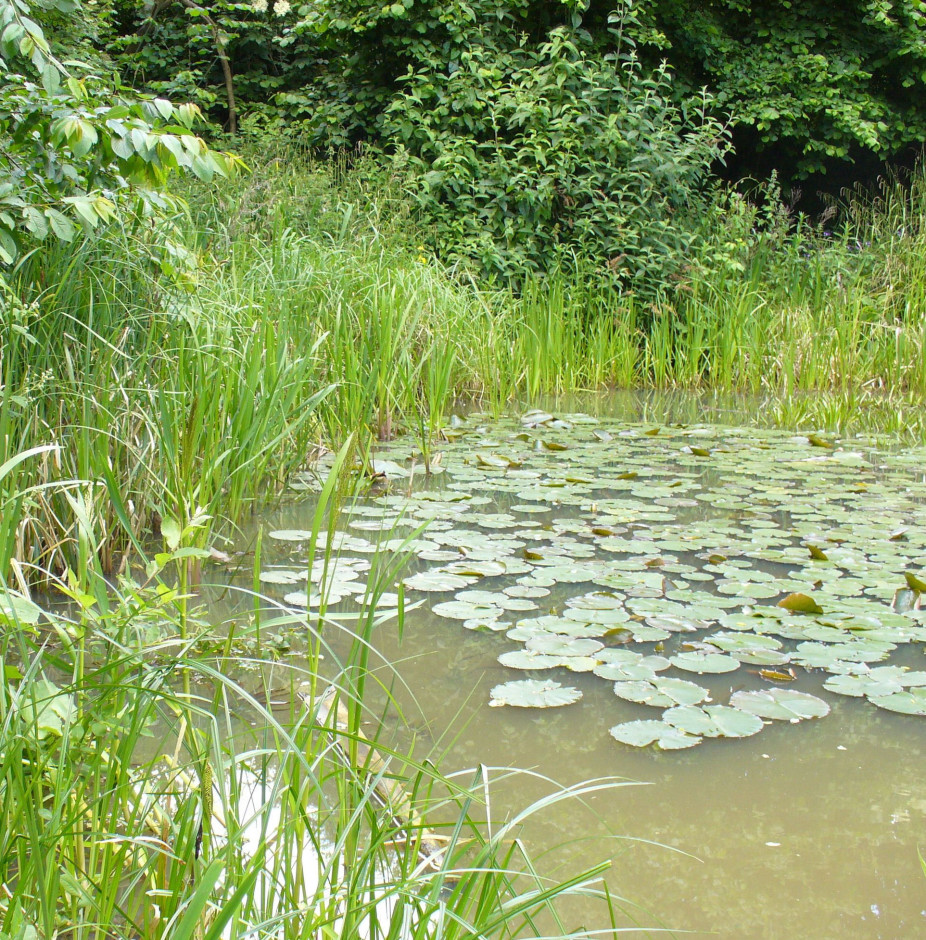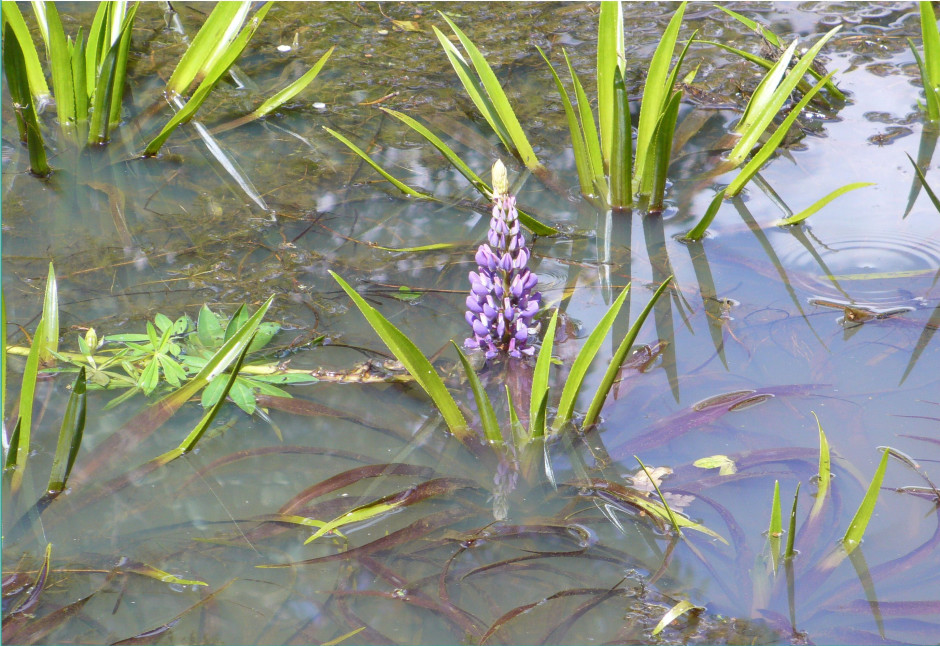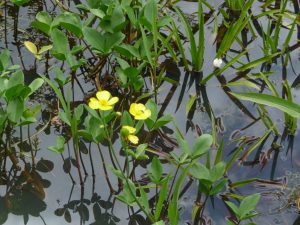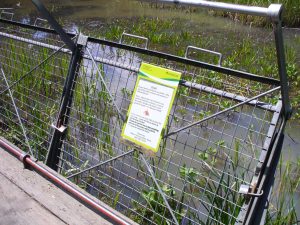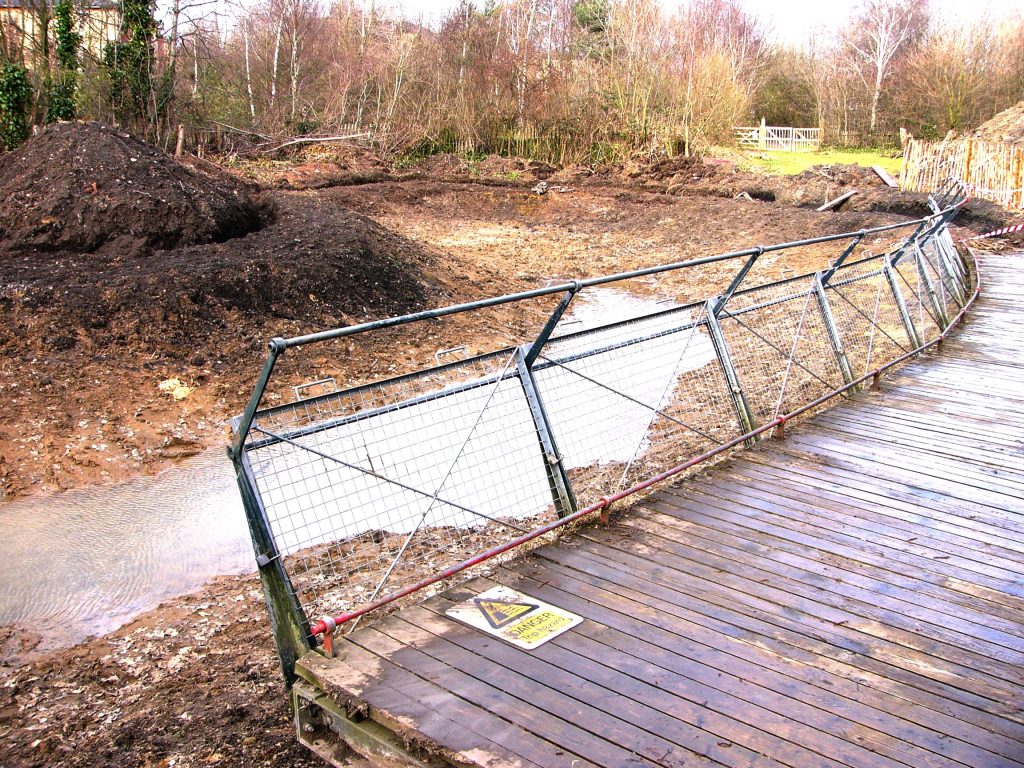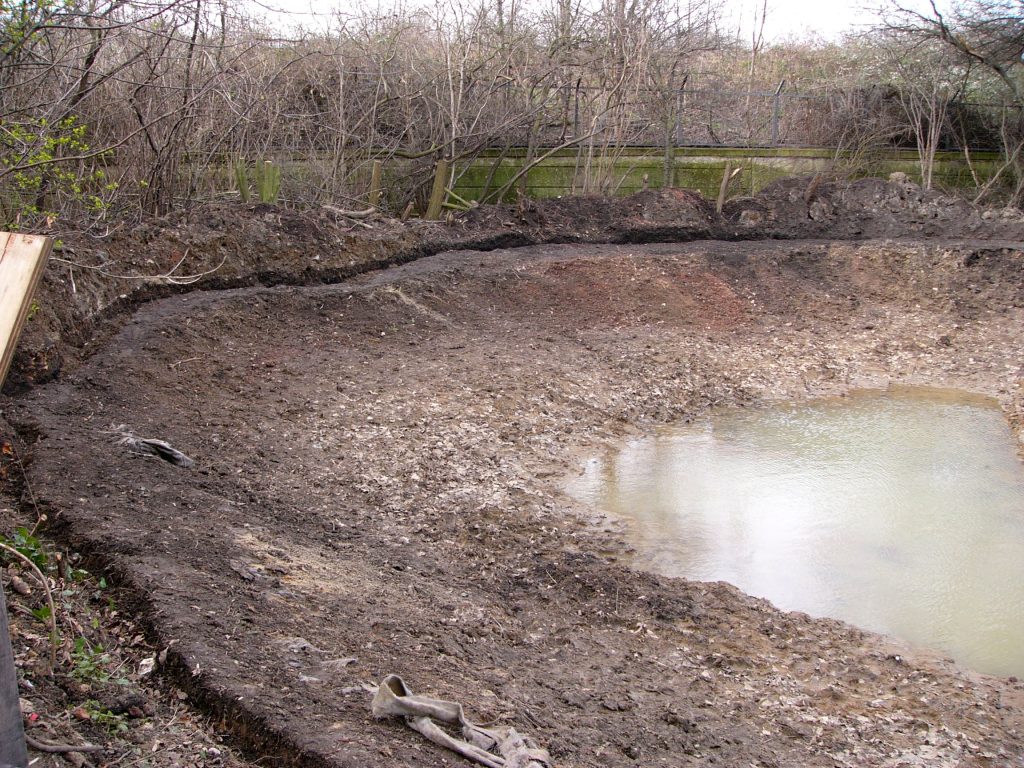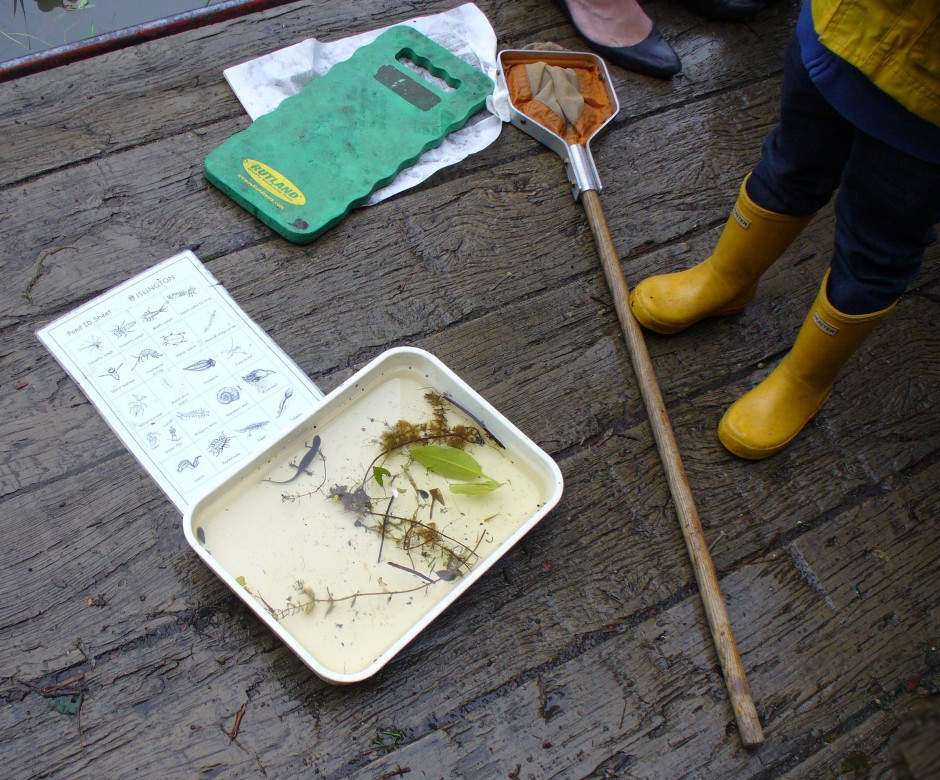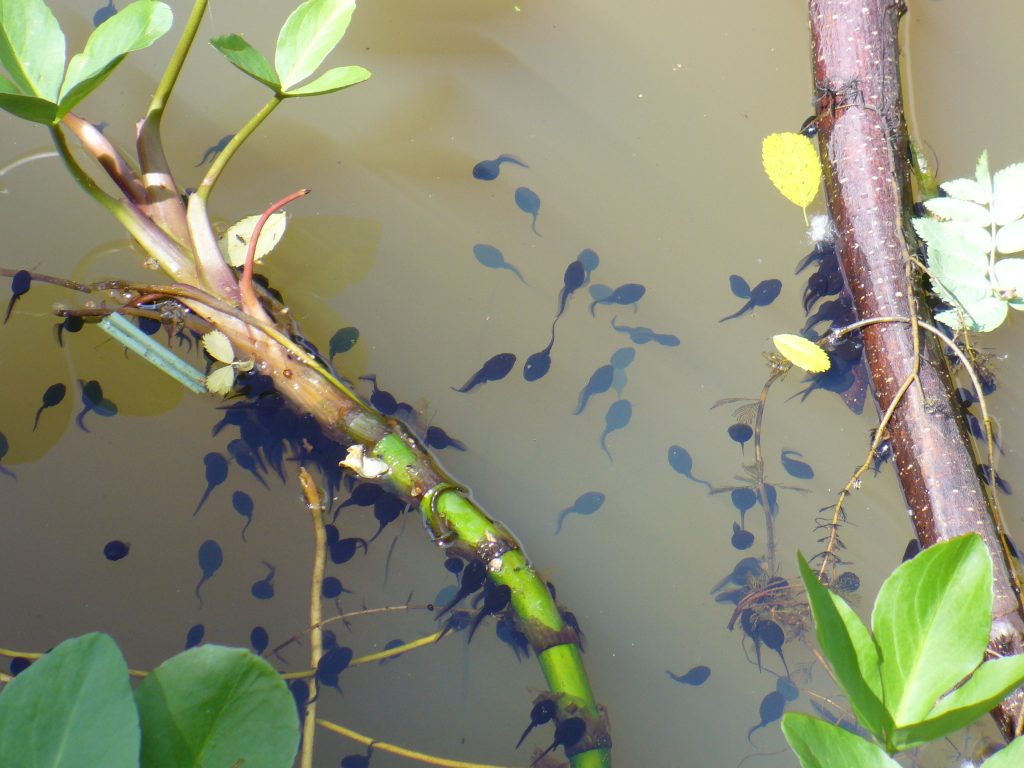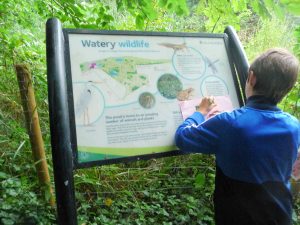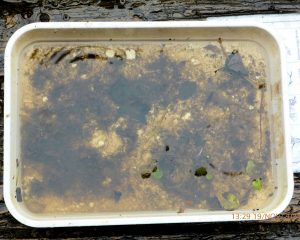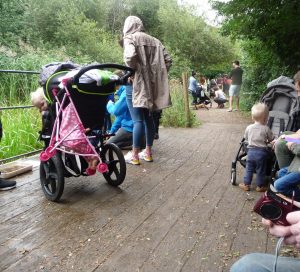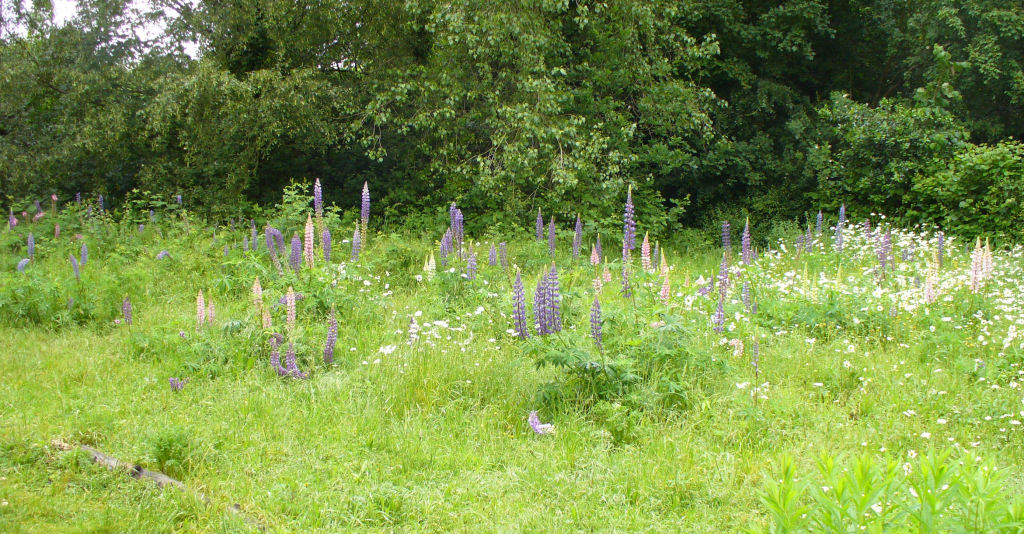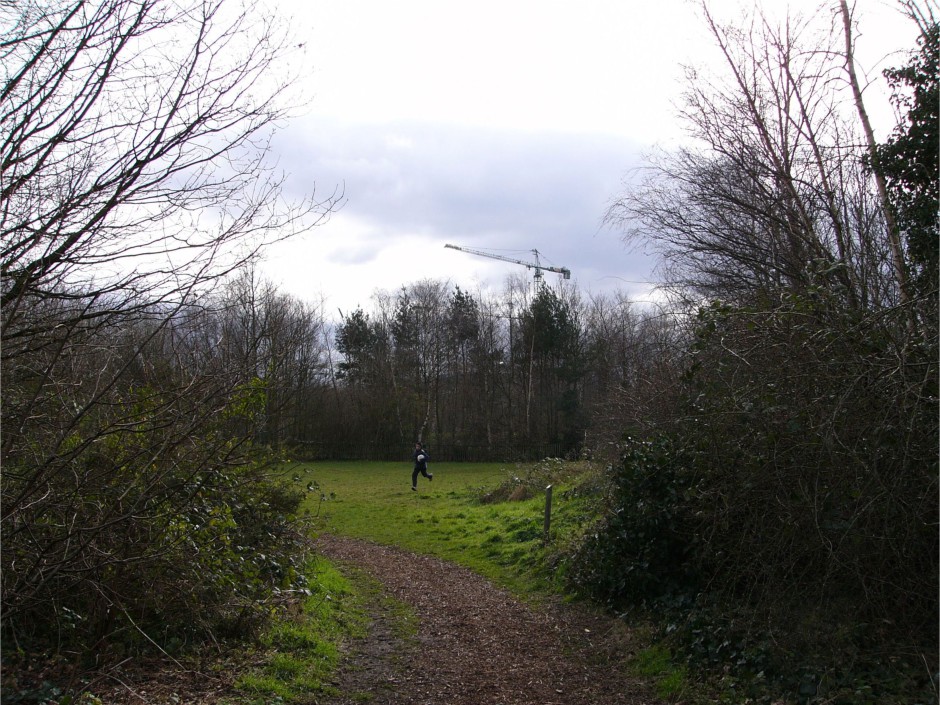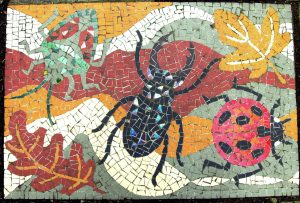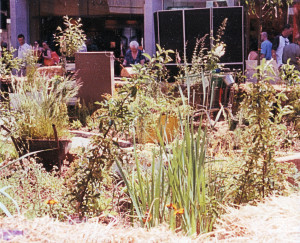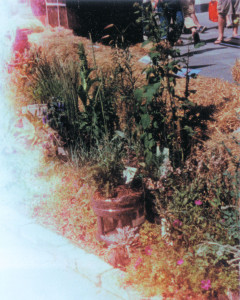The Highbury Wildlife Garden owes much to our Local Nature Reserve, Gillespie Park, which is just down the road. Behind high brick walls with arched iron gates, the park and its Islington Ecology Centre rest on a site that had been railway sidings and the Stephens Ink Factory. After the factory closed, only a determined effort by local people, acting with the Council, saved the land from development.
Those local people, the Friends of Gillespie Park, did well to save this land. Attempts dating from the early 1850s to create either a 300-acre ‘Islington Park’ or a 500-acre ‘Albert Park’ around Highbury failed, while developers working to cover most of Highbury with terraced houses succeeded in doing so.
History of Highbury, Keith Sugden
(p. 25, park schemes)
The Friends of Gillespie Park remain active in protecting the site. Until 2014 they hosted the Gillespie Festival each year in early September. Thousands of people came to hear the music, see the bands, visit the organic cafe, enjoy face painting, Morris Dancing, drumming, and the many stalls, including cycle advice from Doctor Bike and local fare grown by members of the Quill Street Allotments.
http://www.friendsofgillespiepark.co.uk
Layout of Gillespie Park
Gillespie Park is wrapped around the Arsenal Underground Station and terraced houses on Gillespie Road.
The Park has separate habitats – grassland meadows, wetlands, woodland, hedgerows – each catering for different wildlife. Meadows, which have nearly disappeared from the countryside, are especially important here.
In the wetland areas (the Main Pond, waste water recycling system and reedbeds), wildflowers include White Waterlily, Water Forgetmenot and Purple Loosestrife. In the grassland meadows Birdsfoot Trefoil, Rosebay Willowherb, Wild Carrot and Musk Mallow, with many other wildflowers and grasses, attract the wildlife.
The Gillespie Park Site Guide
Written by Peter Howath, botanist and longtime Conservation Ranger at the park, the guide has a wealth of detail, from the reserve’s underlying geology of London Clay and compacted railway ballast to its wildlife and plantlife. Creatures visiting the park include foxes, squirrels, frogs, toads, newts, birds (94 species), butterflies, dragonflies and damselflies. The guide is available from the Islington Ecology Centre.
Pete could identify the tiniest mosses (19 species) in the park; like many wildflowers (over 200 species), they blew in as spores or seeds from elsewhere. Those who came to Pete’s Botany classes in the Ecology Centre will have walked round the park with him and been shown the reserve’s many trees, wildflowers, mosses, fungi, and pondlife, particularly the Dragonflies…
A Walk in the Park
Enter through the Drayton Park gates and walk up the drive to the Islington Ecology Centre.
The park is open from 8AM to dusk throughout the year, except for Arsenal match days when both the reserve and the Ecology Centre are closed. The Ecology Centre is open from 10am to 4pm Monday to Friday.
The Islington Ecology Centre

The plaque on the front wall of the Ecology Centre was awarded to Gillespie Park in the 2012 Queens Diamond Jubilee by Fields in Trust, protecting outdoor spaces since 1925.
Walk into the Centre. The Islington Ecology Centre is home to the Nature Conservation Team, who advise the public on wildlife gardening and sustainable living, run events, take school bookings and organise the Conservation Volunteers.
The Centre has passive ventilation and lighting, a biomass boiler and a waste water recycling system. Information about sustainable living, wildlife events and more may be found here. Many parents introduce their young ones to the natural world with tours of Gillespie Park in their pushchairs; there is a good selection of childrens’ books available for them. Older children may come to the park as part of a school trip, when the Centre’s main hall is used as a classroom.
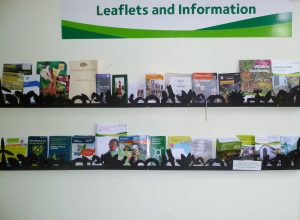
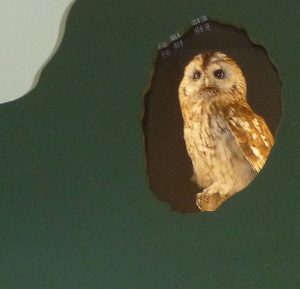
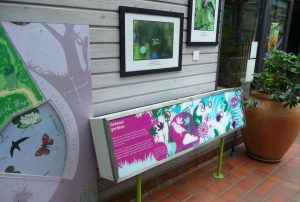


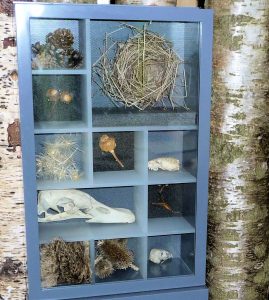
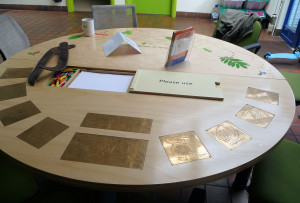
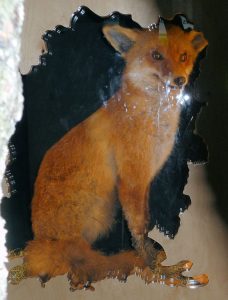
Hiring the Centre
The Ecology Centre may be hired; there is room for up to 80 people at a sit-down meal. Classes, talks and workshops happen in the main hall, overlooked by the wildflower meadow mural. If your tai chi or yoga class is at a time of year when the park’s meadows are asleep, you still have wildflowers.
If you come along to the Park to volunteer on a Thursday, we meet at 10 am in the Ecology Centre. We have a chat at the big round table before heading out to do the day’s tasks. These can be in Parkland Walk, Barnesbury Wood or Gillespie Park itself. At lunchtime, if we are working in Gillespie Park, those who’ve brought their own packed lunch or brought something back from the shops like to eat inside at the round table. In mild weather, people enjoy lunch outside, often behind the Ecology Centre or sitting on the bench by the big pond.
Leave the Ecology Centre by the front door. Turn right and walk across the parking area to the driveway, framed by a stand of trees and shrubbery. Turn right again. Walk up the drive past wildlife-friendly planting alongside the Ecology Centre.
Look down over the rock garden, past giant Cardoon Thistles and Coneflowers to birdfeeders hanging on a long cable, the water purification pools and the bower.
Pass the wooden gate; at the top of the hill are the metal sculptures. Carry on past them; next on your right is a Bramble thicket – wildlife loves the blackberries. At the top of the slope, whirring round energetically, the wind turbine is busy creating the power to run the Ecology Centre.
Passing the wind turbine, follow the path. On your right is the reedbed and scrape meadow; on your left lies open land, bounded by a high chain link fence and the railway line.
A stand of Hawthorns to your right provides flowers for the pollinators and haws for the birds.
Now you are walking through a very long meadow, Long Mead, following the path past dog-walkers and joggers. The meadow is filled with wildflowers: Goat’s Rue, CowParsley, Wild Carrot, Kidney Vetch, Lupin and Knapweed. Rich with colour and visited by bees, butterflies, hoverflies and other insects, the meadows buzz when flowers bloom.
Gillespie Park’s meadow strategy for biodiversity involves cutting back everything that grows on one side of the path and leaving the other side as it is. Creatures in the shorn side of the meadow can then migrate to the uncut side. What is cut back is taken away, so as not to improve the soil. Most of the wildflowers prefer poor soil.
Volunteers can help here, as elsewhere on the reserve
– swinging a scythe, pruning back bramble, raking up the cuttings.
The final stretch of the upper park is bounded on one side by high fencing for the railroad tracks, & on the other by trees & a slope down to back gardens of houses on St Thomas’s Road. Wildflowers flourish on either side of the path, which ends at a flight of stairs down to Seven Sisters Road. The gate to the stairs is opened at 8 am, as are the other park gates; they are closed at dusk except for Arsenal Matchdays when Gillespie Park itself is closed.
If you turn in to the Ecology Centre rather than heading up the driveway to the upper meadows, you can follow a path around it…
Turn left at the Buddleia tree… walk to the corner of the building and turn right…
Wildlife planting at eye level includes Hardy Geraniums, Alliums, Aquilegia (Granny’s Bonnet), Foxgloves and Ceratostigma willmottianum.
Wildlife-friendly plants in the rock garden behind the Islington Ecology Centre include Coneflowers, Teasel, Red Campion, Speedwells and Rosemary.
As you reach the small ponds behind the Centre, you find wildflowers suited to wetter surroundings, such as Purple Loosestrife, Dame’s Violet, and Ragged Robin.
To your right is the back porch of the Ecology Centre. Turn left; go through the Knotted Gate and follow the woodland path.
In summer, when walking the reserve to do the Butterfly Transect (counting the numbers of butterflies), the Speckled Wood is often seen here, to your left, basking on a leaf in sunshine and defending its patch against other Speckled Woods.
The main pond
On your left is the main pond and reedbed. A boardwalk, favourite spot for pond dipping, curves around it. Look through the metal barriers to see the pondlife. These could include tadpoles, water skaters and water scorpions, depending on the season.
The seating is a lovely spot for watching dragonflies in summer.
Gillespie Park’s Main Pond was overgrown, in need of a clearout & a new pondliner. Conservation Ranger Peter Howath planned the event months in advance, booking in extra help because of the size of the project. The pond was drained in 2004, & surrounding vegetation cut back. March rains added to the layer of wet mud at the bottom of the pond. More draining was done. The humans were mobilised; heavy geotextile & pondliner brought to the site.
St Patrick’s Day Frogfest
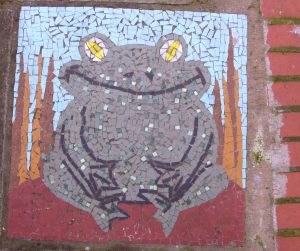 The park’s frogs now appeared. For most of the year, they hide away under cover, silent and unseen. But in spring, frogs return to the pond of their birth (if possible) to mate. Pete said that in spring a nightly cacophony of croaking frogs can be heard round the reserve. Though the park is only five minutes’ walk from our house, we never hear this cacophony. The brickwork of the local terraced housing must muffle the croaks.
The park’s frogs now appeared. For most of the year, they hide away under cover, silent and unseen. But in spring, frogs return to the pond of their birth (if possible) to mate. Pete said that in spring a nightly cacophony of croaking frogs can be heard round the reserve. Though the park is only five minutes’ walk from our house, we never hear this cacophony. The brickwork of the local terraced housing must muffle the croaks.
17th March, St Patrick’s Day, was unseasonably hot that year. Islington’s Greenspace Team, The British Trust for Conservation Volunteers, Gillespie Park Volunteers & Others gathered with the Conservation Team round the main pond, in shirtsleeves.
17th March was also frogs’ spawning time, with every frog in the park keen to return to the main pond. From the upper meadows to the kickabout area & everywhere else they’d been under cover, they came. Unaware that the humans had a huge project underway for which the pond had been drained, they splodged into the wet mud at the bottom. It became ever so difficult sorting out what was mud & what was frog.
The fear was that frogs could be covered over with geotextile and pondliner. We watched the mud for movement, gathering up the muddy frogs & placing them gently into buckets. They were carried up to the small pools behind the Ecology Centre, where we let them slide into the water. The Big Pond, however, had a magnetic hold on them, & they came hopping back down the woodland path again & again…
It was an unforgettable team effort for those of us involved with the laying of the pondliner. The persistence of those frogs was legendary! Now, when we see a new season’s tadpoles swimming in the ponds, or later on, when we catch a glimpse of an adult frog on its own somewhere around the reserve, we know what their ancestors went through to keep the frog family tree going.
Frogs have been in trouble for years now, worldwide. In 2005, when the pondliner was replaced, some Gillespie Park frogs were suffering from a disease called Redleg. At pond dipping for half term, 2014, there were NO frogs at all. The only tadpoles were toad tadpoles. If you have a pond & there are frogs in it, consider yourself blessed.
May 2014 – Half term Pond Dipping, tadpoles in Main Pond
September 19th 2021 – Community Fun Day Pond Dipping
;
Carry on along the boardwalk with the main pond on your left; now follow the path. St Thomas’ Meadow is on your right, & the stone circle & Lupin Meadow to your left. A wooden gate is before you; a length of chain looped round a post keeps it shut. Lift the chain, open the gate & walk through. Turn round & close the gate, replacing the chain. Closing the gate behind us is the custom on the reserve, as it is in the countryside. Here, the gate separates the dog-walking area from that of the Main Pond, & keeps ground-nesting birds safe from disturbance.
Walk on into the wooded area. Local dogs & their owners make good use of the lower park from here through the Kickabout (open play) area & Ambler Wood to the back gate. On this flat field, the stage & stalls were set up for the Gillespie Festival. Walking to the back gate, you emerge onto Quill Street, a short walk away from Monsell & St Thomas’s Roads.
Short Videos
*Gillespie Park Nature Reserve to Finsbury Park Herping https://www.youtube.com/watch?v=Vi62eiaHZrA
*Tadpoles – Gillespie Park Nature Reserve https://www.youtube.com/watch?v=2690l6YqLzk
*Gillespie Park four seasons in four minutes https://www.youtube.com/watch?v=I_-JHrfFAMA
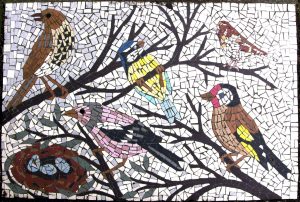
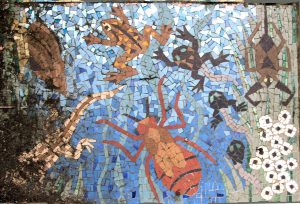
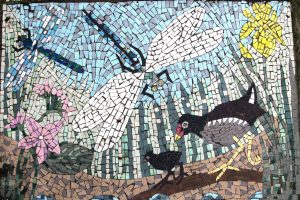

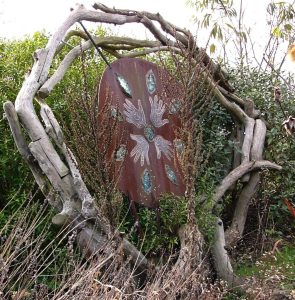
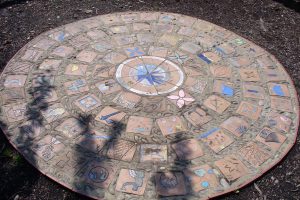
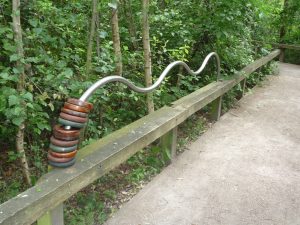
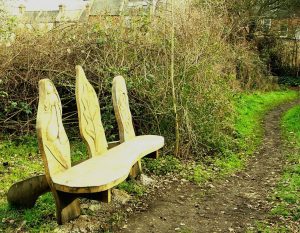


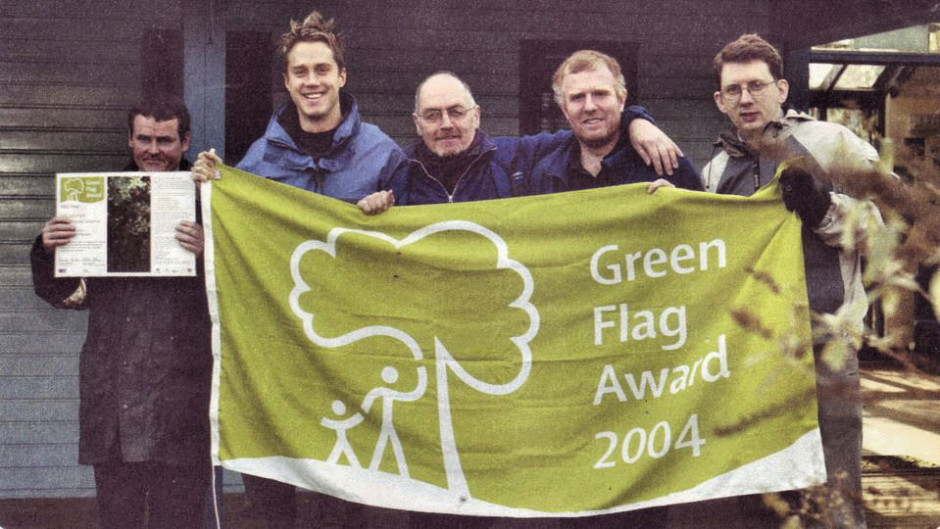
2004 Green Flag award to Gillespie Park team, Richard Meyers at centre.
2014: Unexpected Loss of Conservation Ranger Richard Meyers
